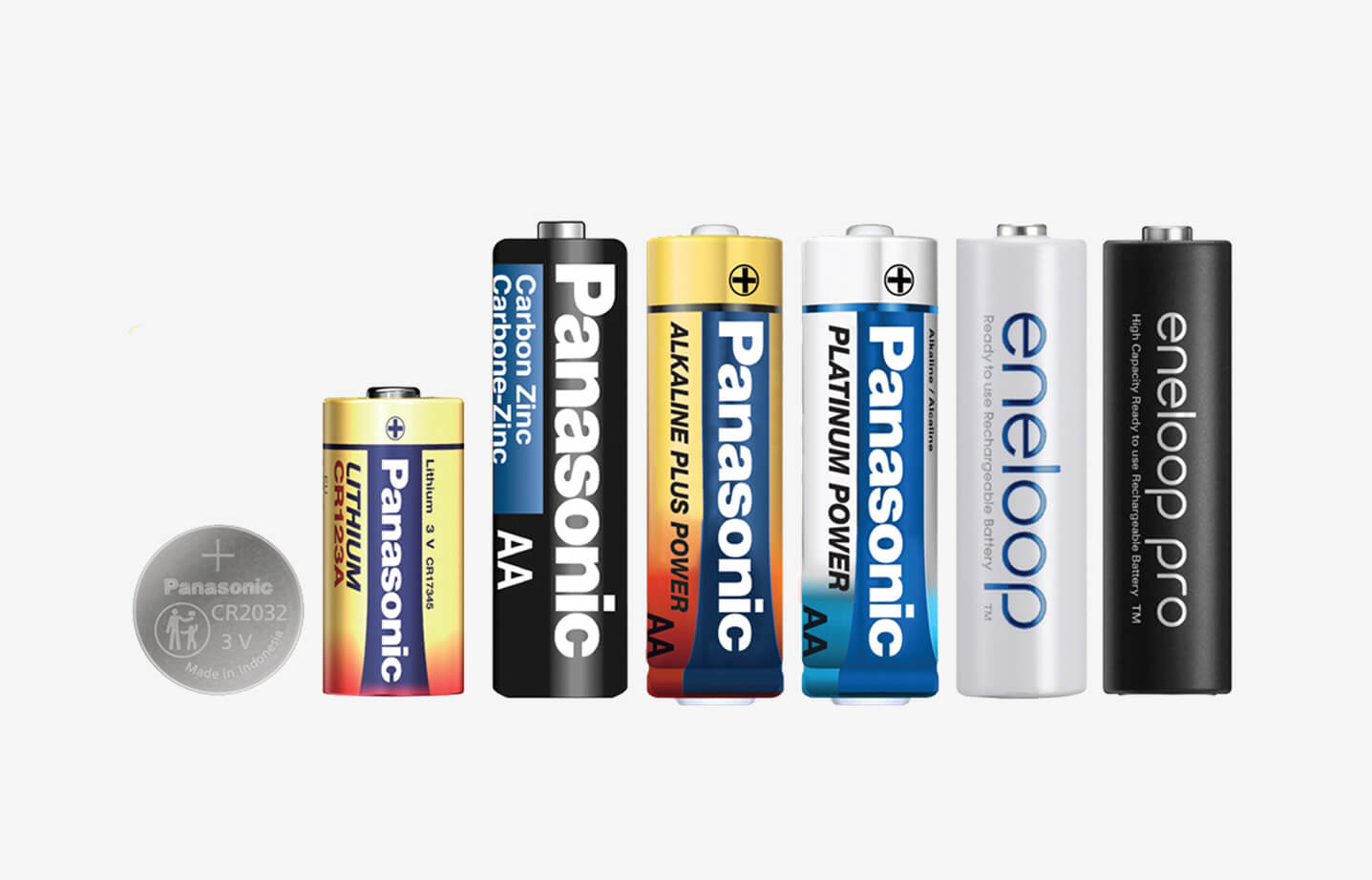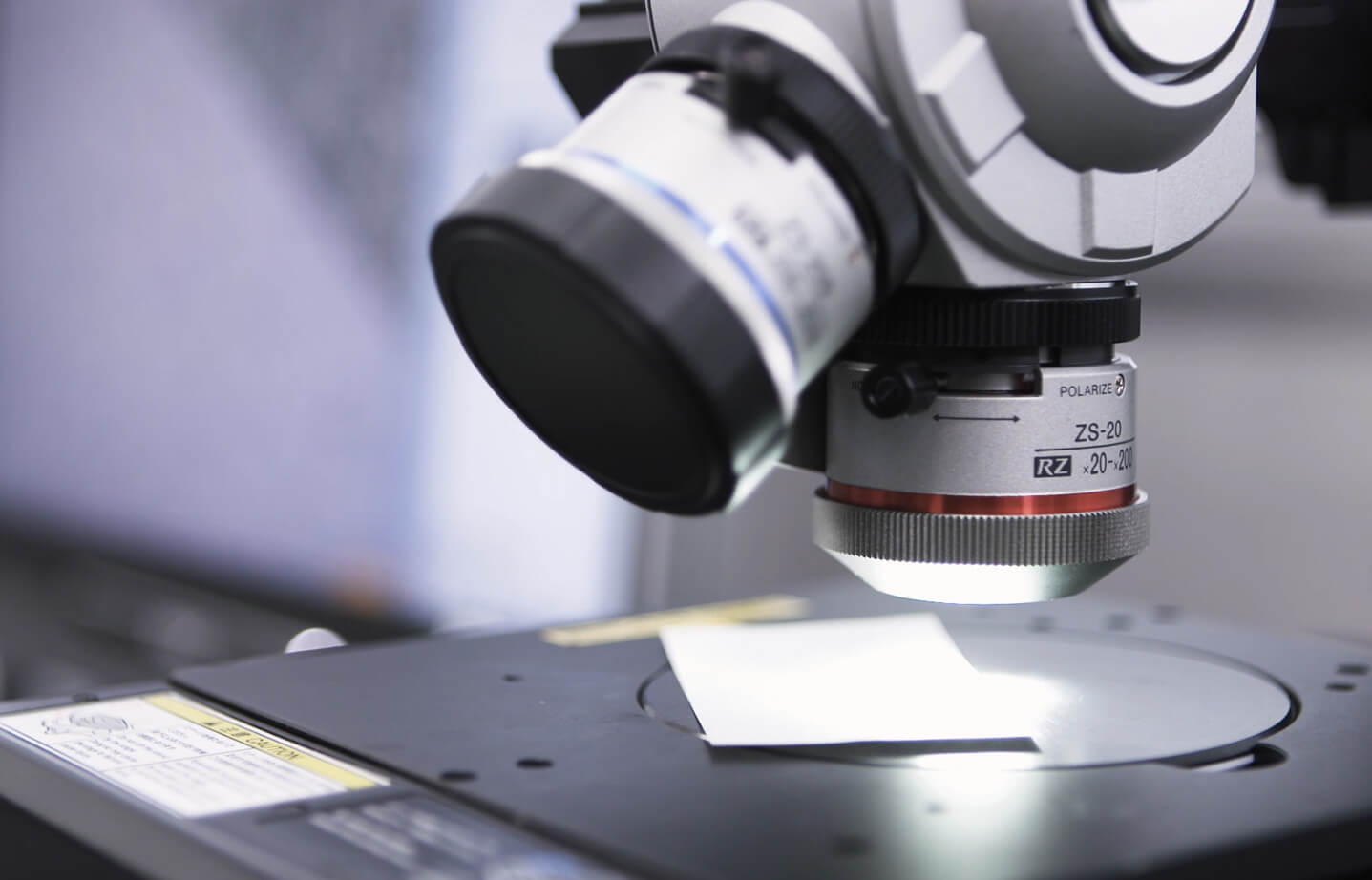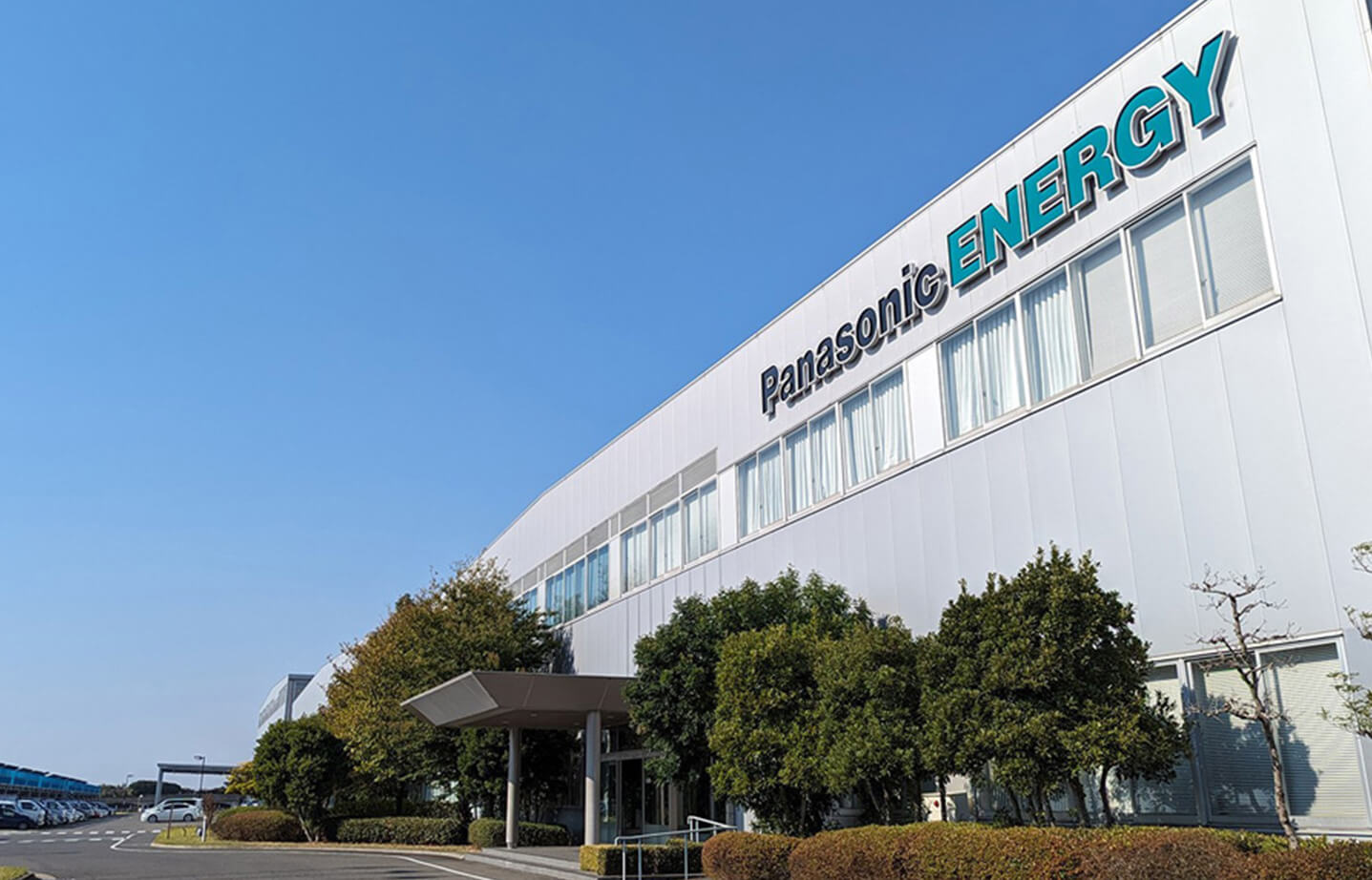COMPANY
Support
SUPPORT
Our Commitment to Excellence
Panasonic is the premier manufacturer of powerful, energy-efficient long-lasting batteries. We are invested in finding solutions for sustainable global development.
Need support for a Panasonic Battery product or have a few questions about how to use your new charger?
Quality is our guarantee. If you are having any issues with one of our products for any reason, we want to know about it and help you find a solution. Contact us by email listed below at your convenience to receive the support you need. Remember to browse through topics in our FAQ which may provide an immediate answer to any questions you may have.
HERE TO HELP
Get in Touch
Email Us
When sending email, please include product info, where purchased, date of purchase, and any details to help expedite a response.
Support:
[email protected]
Sales:
[email protected]
DOWNLOADS
Documents & Instructions
FREQUENTLY ASKED QUESTIONS
FAQ
01
What is the difference between battery sizes AA, AAA, C, and D batteries?
In addition to the differences in diameter and height, AA, AAA, C and D batteries also have different mAh power according to the size of their battery can. For example, D size alkaline batteries are roughly three times the size of a AA alkaline battery, and therefore, have roughly three times the amount of stored power. AA cells measure approximately .57”D x 1.99”H and are 1.5V; AAA cells .41”D x 1.75”H and are 1.5V; C cells 1.03”D x 1.97”H and are 1.5V; D cells 1.35”D x 2.42”H and are 1.5V; 9V cells 1.04”D x 1.91”H and are 9V.
02
Which batteries should I use for my devices?
Which battery chemistry you use largely depends on your device application
– Carbon Zinc Batteries (also known as Super Heavy Duty) are best for low drain devices like TV remote controls. Panasonic offers Super Heavy-Duty batteries (Carbon Zinc), as a value alternative best suited for low drain devices.
– Alkaline Batteries are great for everyday use and high drain devices like flashlights, RC cars, computer mice and keyboards and even wireless gaming devices. Panasonic offers Alkaline Plus, a good all-around Alkaline battery and Platinum Power Alkaline, our highest performance Alkaline battery which provides up to 33% more power in certain applications, than our Alkaline Plus batteries.
– Ni-MH Rechargeable Batteries are perfect for everyday use and high drain devices. Panasonic offers two Ni-MH rechargeable battery options: eneloop and eneloop pro are perfect for low, medium, and high drain devices. eneloop and eneloop pro batteries can be used in all types of device applications and the excel in high drain devices as they can be recharged and reused over and over. eneloop pro features higher mAh capacity, resulting in longer lifer between charges.
– Lithium Batteries are best suited for high drain devices like tactical flashlights, and golf range finders, applications. Panasonic manufacturers and sells a wide range of lithium batteries.
– Lithium Car Key Batteries come in various sizes and are often referred to as “coin cells”, due to their resemblance to coins. Panasonic offers a wide variety of size to meet over 95%
03
Should I store new batteries in the freezer or refrigerator?
No. We recommend storing batteries at room temperature in a cool, dark, dry environment (such as an indoor drawer, cabinet, or closet). Storing batteries in extreme cold or heat can reduce battery life. Panasonic offers plastic battery cases in both a 6-packs or 2-packs, in both clear and smoke color. These Panasonic battery cases were designed by our engineering team in Japan, making it easier to safely store up to 4 AA or 5 AAA batteries in each case.
04
What does the + and – symbols represent on a battery?
The + is the positive battery terminal and the – is the negative battery terminal. When installing batteries in a device make sure the positive or negative symbols on the battery are aligned with the markings on the device.
05
How long will batteries last?
Battery life is dependent on several factors including the power drawn by the device (e.g. TV remote controls require little power where flashlights require more), the weather (extreme hot or cold conditions), and the type of battery.
06
When is the right time to remove batteries from my device?
In general, batteries should be removed from devices when:
A device will not be used for several months.
The batteries are completely drained (this prevents the possibility of battery leakage).
A device is being powered using household (AC) current
07
How should I properly dispose of batteries?
Check with local government websites as laws and regulations may vary by city, county or state. Do not throw batteries in your trash cans. The EPA recommends taping the positive and negative (+ or -) terminals of each battery with non-conductive tape. Lithium-Ion batteries should be taken to recycling or household hazardous waste collection locations. To find a battery disposal center near you check the Call to Recycle website at https://www.call2recycle.org/locator/.
08
What is the voltage of AA or AAA alkaline batteries?
The voltage for AA and AAA alkaline batteries is 1.5V. While the voltage for all AA and AAA alkaline chemistry batteries is 1.5V, mAh and other product characteristics will have an impact on the life and performance of the battery. Panasonic often has unique components and manufacturing processes that allow our batteries to provide excellent performance through the life of the cell.
09
What is the voltage of AA or AAA Ni-MH batteries?
The voltage for AA and AAA Ni-MH batteries is 1.5V. While the voltage for all AA and AAA Ni-MH chemistry batteries is 1.5V, other product characteristics will have an impact on the life and performance of the battery. Panasonic eneloop and eneloop pro batteries unique design, components, and manufacturing processes allow our batteries to provide excellent performance through the life of the cell.
10
What is the voltage of Lithium Coin batteries?
The voltage for lithium coin batteries is 3.0V. While the voltage for all lithium coin batteries is 3.0V, other product characteristics will have an impact on the life and performance of the battery. Panasonic lithium coin batteries feature a unique design, components, and manufacturing processes that allow our batteries to provide excellent performance through the life of the cell.
11
Can Alkaline batteries be recharged?
No. Alkaline batteries are considered “single use” and should be disposed of according to the laws and regulations in your given city, county, and state.
12
What causes batteries to leak?
When batteries are subjected to high temperatures or concealed in an airtight space for long periods of time, they are more susceptible to leaking. Panasonic uses proprietary gaskets, sealing technology and other specialized technologies to resist battery leakage.
13
What is the Panasonic warranty for batteries?
Panasonic Energy’s limited warranty guarantees products to be free from defects in materials and workmanship.
14
Where are Panasonic batteries made?
Panasonic batteries are primarily manufactured in one of our several global battery manufacturing facilities located in the U.S.A., Japan, Indonesia, Costa Rica, Europe, and China.
15
What safety standards does Panasonic follow?
Panasonic batteries meet or exceed all global safety standards. We are a leader in helping drive global battery and packaging safety standards. Our batteries and battery chargers are rigorously tested to make certain they meet or exceed all safety standards.
16
Is Panasonic lithium coin battery packaging safe?
Panasonic lithium coin batteries and packaging meet or exceed IEC 60086-4:2019; ANSI C18.3M Part 2:2024; CFR 16, Part 1700.20 and CFR 16, Part 1263 as required by Reese’s Law (Pub. L. 117-171, 15 U.S.C 2056e).
17
Do Panasonic batteries last as long as other leading brands?
Panasonic engineers long lasting performance, reliability and safety into all their batteries. While battery life is dependent on the specific chemistry, device, and other factors, you will find Panasonic batteries compare favorably to all leading battery brands.
18
Where can I buy Panasonic batteries?
Panasonic batteries can be purchased from brick and mortar and online retailers throughout the U.S.A. For a list of retailers near you, try using our dealer locator <URL).
19
What does Ni-MH mean?
Ni-MH is abbreviation for Nickel Metal Hydride, a type of chemistry used for most AA and AAA batteries used today.
20
What does mAh stand for?
The term mAh, typically found on Ni-MH rechargeable batteries, represents milliamp hours, which is the measurement for the capacity of the battery.
01
What is the chemistry of eneloop and eneloop battery cells?
eneloop and eneloop pro are rechargeable, Nickel Metal Hydride (Ni-MH), low self-discharge batteries.
02
How many times can the latest version of eneloop batteries be recharged?
The latest eneloop batteries can be recharged up to 2100 times (when unused and properly stored)
03
Can I charge 2100 cycle and former versions of eneloop batteries at the same time?
Yes, when using a Panasonic Ni-MH battery charger, all current, and former versions of eneloop and eneloop pro AA and AAA batteries can be charged together. Panasonic Ni-MH battery chargers individually charge each battery cell, ensuring each battery is fully charged according to its required charging capacity.
04
What does the term mAh stand for?
The (mA) stands for milliamps. The (h) stands for hour. This rating determines the amount of power that can be stored on a rechargeable battery, similar to the size of the gas tank in your car.
05
Why does eneloop and eneloop pro packaging have both 2000mAh / 1900mAh and 2600mAh/2550mAh listed?
Regular eneloop batteries deliver up to 2000 mAh typical, 1900 mAh minimum power. Both are listed on the package due to packaging regulations in various countries. AAA batteries are 800mAh typical, and 750mAh minimum. eneloop pro AA cells are 2600mAh typical and 2550mAh minimum and eneloop pro AAA cells are 950mAh typical and 900mAh minimum.
* Charge capacity and mAh estimates based on Panasonic internal IEC 61951-2(7.3.2) testing.
06
Why are eneloop batteries 1.2V and alkaline batteries 1.5V?
All Ni-MH rechargeable batteries, regardless of the brand, are 1.2V. The voltage rating has to do with the chemical makeup of the rechargeable batteries. Alkaline batteries are 1.5V based on their chemical composition. However, eneloop batteries maintain their voltage over the life of the charge, unlike alkaline batteries. This means they will maintain performance of the device they are powering until they need to be recharged. Alkaline batteries will lose voltage throughout their life and will provide less and less power, often resulting in hesitation and intermittent power to the device (as the battery loses power during its lifespan).
07
What is the number of charge/discharge cycles I can expect from eneloop batteries?
The latest version of eneloop batteries can be recharged up to 2100 times**.
** Battery life based on testing method established by IEC 61951-2(7.5.1.3): 2011. IEC Regulation 2017 600 times. Based on IEC 61951-2:2017(7.5.1.4). Results may vary based on conditions of use.
08
I just purchased new eneloop batteries. Do they need to be charged before using?
No. All eneloop battery cells are pre-charged (at our factory using solar energy) and ready to use right out of the package. eneloop cells are specially formulated to hold 70% of their charge for up to ten years, when unused and stored properly. eneloop pro batteries maintain 85% of their charge for up to one year, when unused and stored properly.
* Charge capacity and mAh estimates based on Panasonic internal IEC 61951-2(7.3.2) testing.
09
Where can I buy eneloop and eneloop pro batteries?
eneloop batteries are available from brick and mortar and online retailers throughout the U.S.A. For a list of retailers near you, try using our dealer locator <URL).
10
Will eneloop batteries work in my solar lights?
You will need to check the specifications of the light to see if it is compatible with Ni-MH batteries. eneloop batteries provide exceptional, long-lasting power.
11
Do eneloop and eneloop pro batteries come in a package with a charger?
Yes, there are multiple battery / charger product options available. For a full selection of our battery charger combinations visit for our battery packs or for our Power Packs.
12
How long does it take to charge the eneloop batteries?
It depends on the Panasonic charger used, and the remaining charge on the eneloop or eneloop pro battery. Panasonic sells a wide variety of chargers including high performance quick chargers that are tuned to maximize the charge and longevity of every eneloop and eneloop pro battery. These units charge each of the battery cells individually. This means you can charge eneloop batteries and eneloop pro with “varying” level of remaining battery power.
eneloop cells that have been completely discharged can be charged with eneloop batteries that have only been partially discharged. For more specifics or charging times visit the charger section of our website at <URL>.
13
With the eneloop chargers can I charge 1 battery cell at a time?
Yes, all current Panasonic eneloop and eneloop pro CC17, CC55, CC63, CC65, CC75, and CC87 chargers can individually charge any combination of up to four eneloop or eneloop pro AA and AAA cells.
14
Why does the LED light not come on with the 4-position charger that I just purchased?
The protective strip may still be in place. Remove the batteries from the charger and remove the protective strip that is covering the positive (+) contacts of the charger. Place the batteries back into the charger and plug the charger into an outlet.
15
What does the terminology “memory effect” mean?
“Memory Effect” is a term used to describe the effects on the overall life of the battery when it goes through charge and discharge cycles. eneloop batteries do not experience “memory effect” and do not need to be fully discharged before being recharged.
16
Can I use other brands of chargers to recharge eneloop batteries?
We recommend using only Panasonic brand battery chargers.
17
Do eneloop batteries fall under the airline travel guidelines for Lithium batteries?
No eneloop batteries do not fall under the travel restrictions for Lithium batteries. eneloop batteries are Nickel Metal Hydride (Ni-MH) cells and considered “dry batteries”, not lithium technology. For more information on travelling with lithium batteries, please go to http://safetravel.dot.gov.
18
Why aren’t there any eneloop batteries in the C and D formats available?
Roughly 85% of all disposable batteries are sold in either AA or AAA size. Alternatively, we offer for C and D size plastic adaptors, which allow consumers to use AA-size eneloop batteries in a C or D size battery devices.
19
Can dropping the battery cause damage?
Yes.
20
Do eneloop cells work in DECT phones?
eneloop batteries do work very well for use in DECT phones. However, it is always recommended that you check with the manufacturer of your phone to ensure compatibility. We now offer HHR-4DPA/8BA (8 Pack), HHR4DPA (4 pack) and HHR2DPA (2 pack) Panasonic DECT phone AAA Ni-MH batteries designed for use in Panasonic DECT phones. We recommend using either eneloop rechargeable cells or our Panasonic DECT phone batteries.
21
Will the eneloop and eneloop pro batteries work with Nintendo, X-Box, and PlayStation remotes?
Yes, eneloop and eneloop pro work with the Nintendo, X-Box, and PlayStation battery operated remote controls. In fact, they are a great alternative to alkaline batteries in these types of gaming devices. They also work with other types of remotes that require an AA or AAA batteries.
22
Does temperature impact battery performance?
eneloop cells outperform some alkaline and other rechargeable batteries in freezing temperatures and perform well all the way down to -4 degrees Fahrenheit. Temperature does influence all battery performance including eneloop batteries. In extremely high temperatures batteries (including eneloop cells) can discharge at a more rapid rate.
23
What is the difference between “Pre-Charged”, “Ready to Use” “Hybrid”, “Stay-Charged”, “Active Charged”, and “Ready to Go”?
Those are typically marketing terms for Low-Self-Discharge (LSD) Ni-MH batteries that have been pre-charged at the factory. LSD batteries will all maintain some level of charge. eneloop Ni-MH batteries maintain 70% of their charge for up to 10 years (when unused and stored properly) and can be recharged up to 2100 times. eneloop pro cells maintain 85% of their charge for up to one year (when unused and stored properly) and can be recharged up to 500 times.
24



